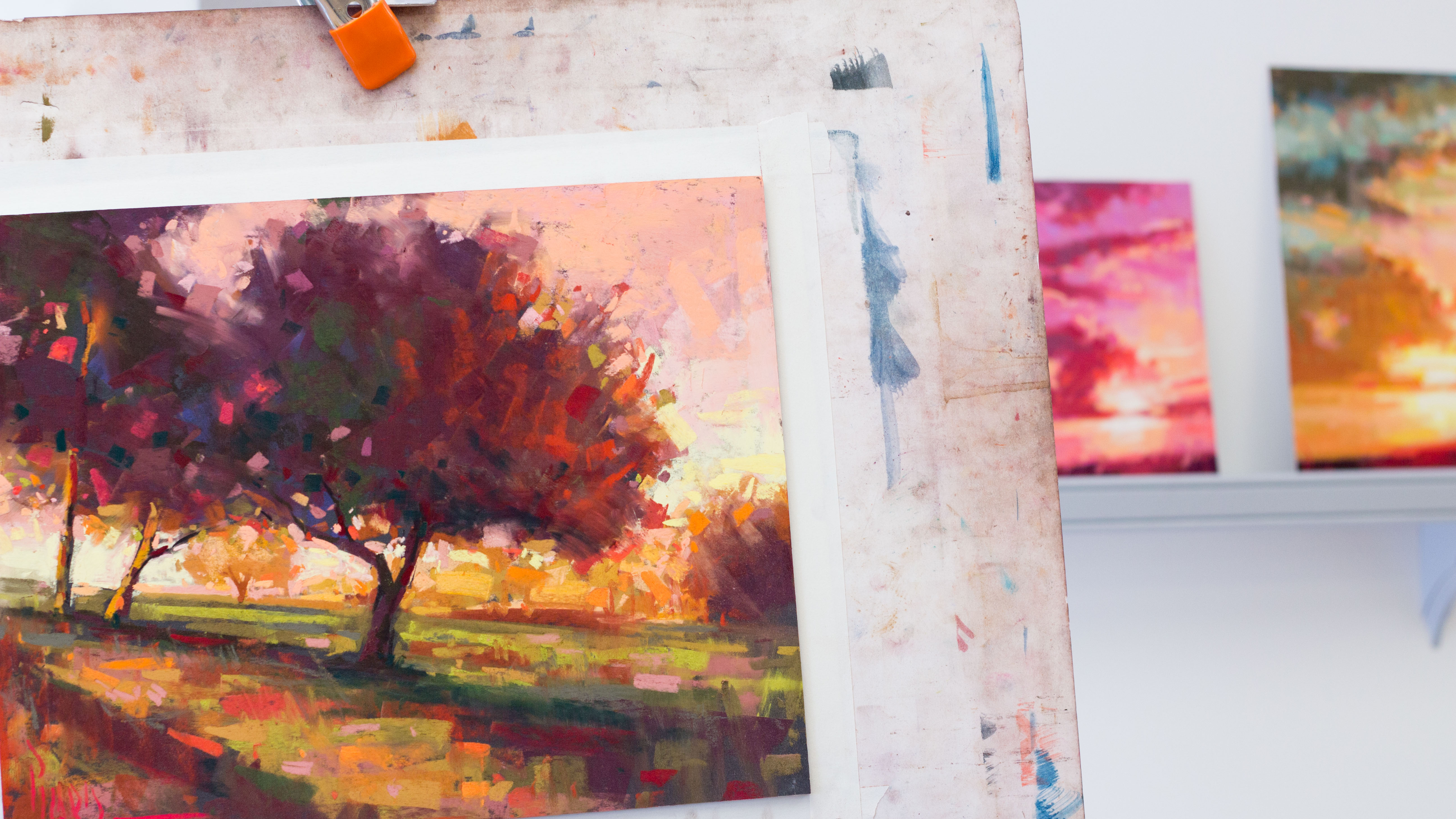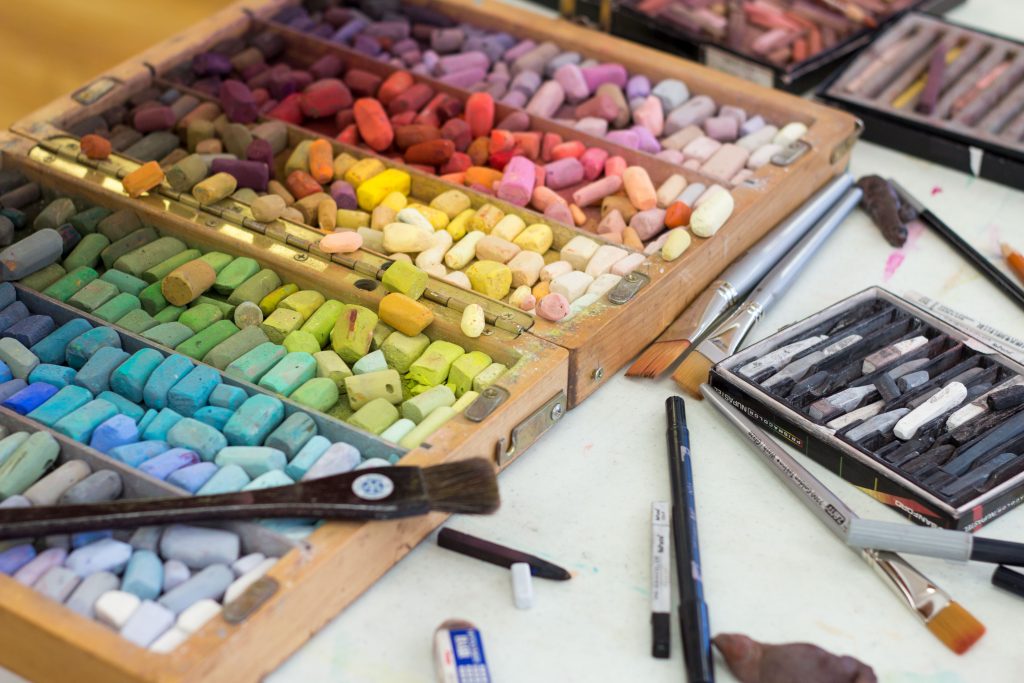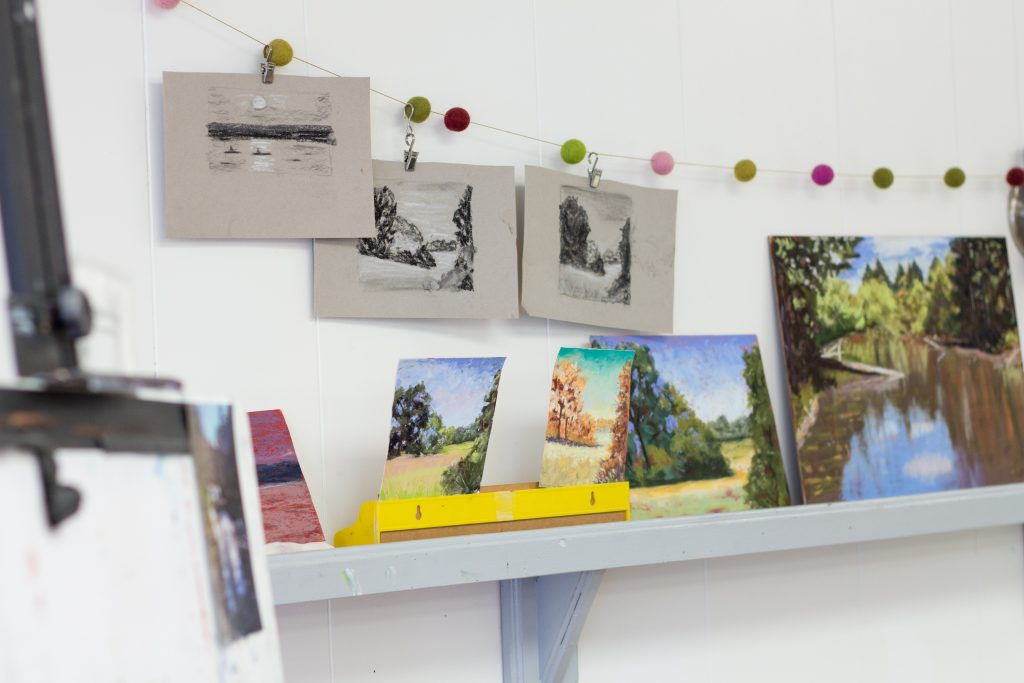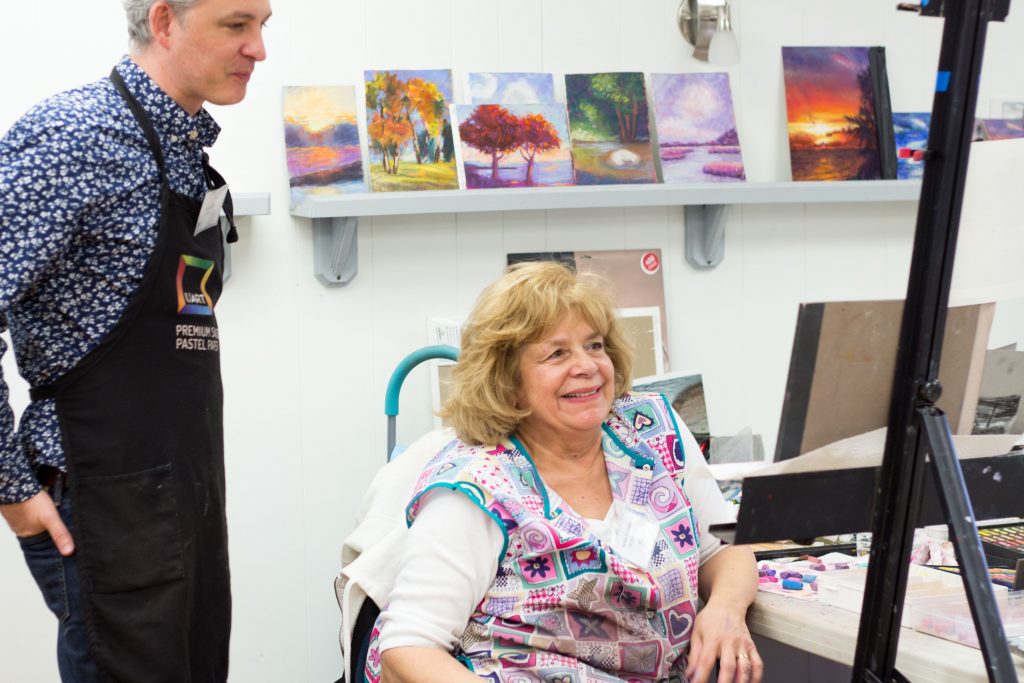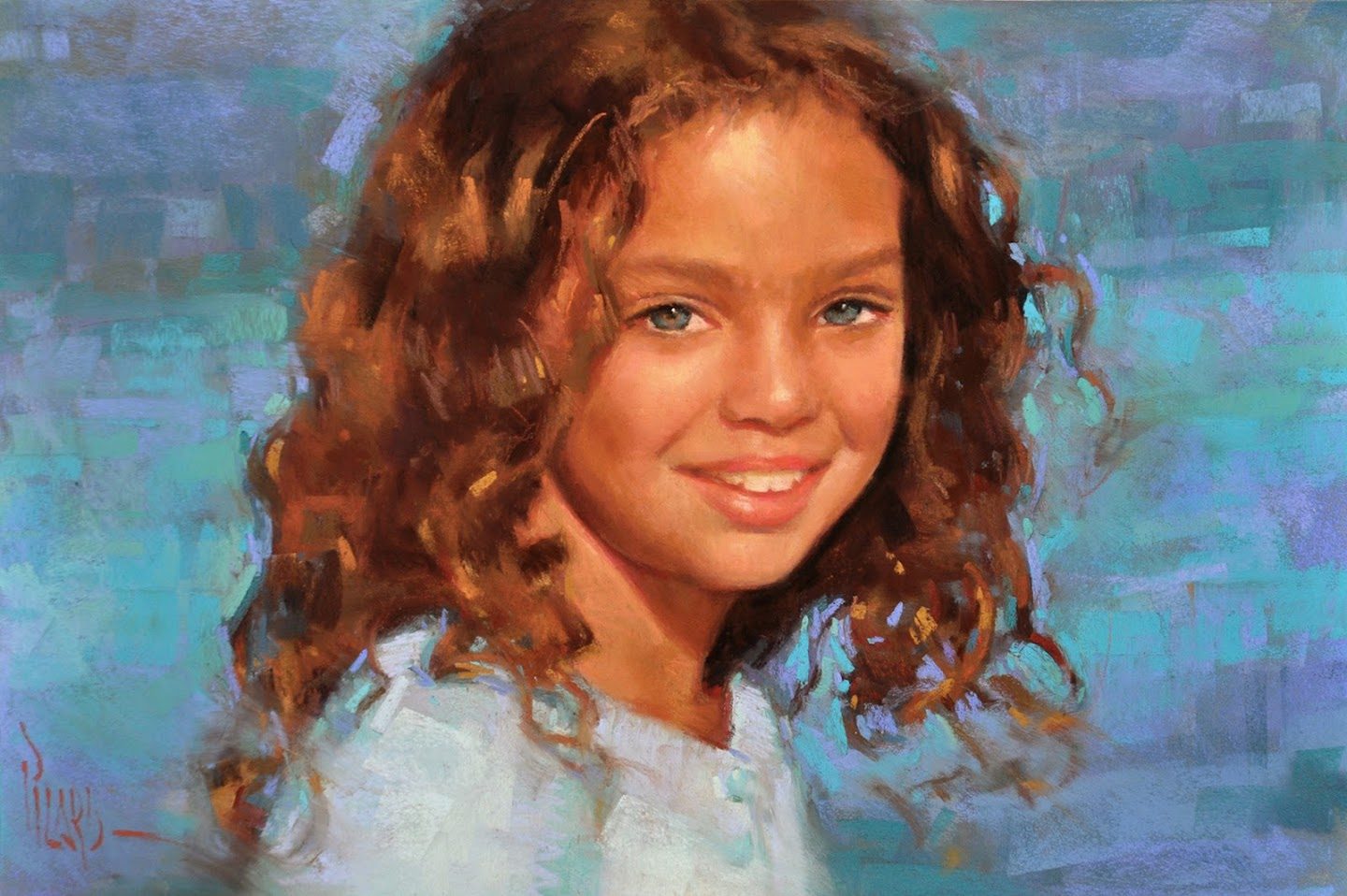Joining us for the first time next season will be Alain J. Picard, an award-winning artist, instructor, author and speaker. His acclaimed pastel and oil paintings have been exhibited throughout the US, Europe, China and the UK. Alain travels internationally as an art instructor, demonstrator, speaker and artistic advocate for the vulnerable.
In advance of his March 31-April 6 workshop on Painterly Landscapes & Portraits, Alain took a moment to fill us in a bit more on his personal practice and approach to his workshops.
Q: How does your personal art practice fit into your life? Do you work on it every day? Block off certain time periods for it?
AP: I’ve heard it said that the good is the enemy of the best. With many competing responsibilities, all of which are good, it’s crucial to design a schedule with studio time that is protected and nurtured. I teach, lead, write, speak, husband, father, and create. With all these roles, a very disciplined approach to studio time is vital. Currently, I have studio painting hours protected for every Tuesday, Wednesday, and Friday, and then teaching and leadership roles are allocated as well throughout the week. This plan gets assessed for each new season to ensure there’s time to prioritize the best. I spent 12 years painting every day and logging my 10,000 hours of painting time before life began to get increasingly complex. We all have competing priorities and challenges, and studio time gets swallowed up by the tyranny of the urgent if we don’t have a clear plan of action. As artists, art-making is an essential priority which must be protected to foster growth. Read Greg McKeown’s book, “Essentialism: The Disciplined Pursuit of Less” for an outstanding wake up call on how to pursue less and gain more.
Q: How do you approach critiques in your workshops?
AP: I like call critiques a “constructive review and celebration” of our work together. I think critiques are vital to the growth of an artist as a feedback mechanism to assess progress, but they are also a positive affirmation tool to verbally reward a student for stretching into new territory and leaving their comfort zone. Yes, we evaluate what works and where opportunities for improvement lie. But we also look at some perceived “failures” and celebrate them as new departures into unknown territory. We must “fall forward” to reach a new level. So I like to get the whole class excited about growing together, and being comfortable with making mistakes along the way to new breakthroughs in technique. Critiques in my workshop are a wonderful time of learning and celebrating together. We have fun, and look for insights into opportunities for growth. I believe critiques when handled well can be quite revelatory for an artist in perceiving the way forward in their work.
Q: How has your work evolved over time?
AP: I have developed from being more focused on realistic portrait and figurative work early in my professional career to now enjoying the landscape, and incorporating a colorist approach into all my work. My style has evolved to allow a more painterly and impressionistic application of marks. While I still love portrait and figurative subjects, I am interested in exploring themes of culture and identity in my figurative work, and utilizing techniques that will best tell the story of each subject, whether loose or more refined. I have a love affair with mark making in pastel, and continue to explore composition and color as new frontiers in my landscape and figurative work.
—
